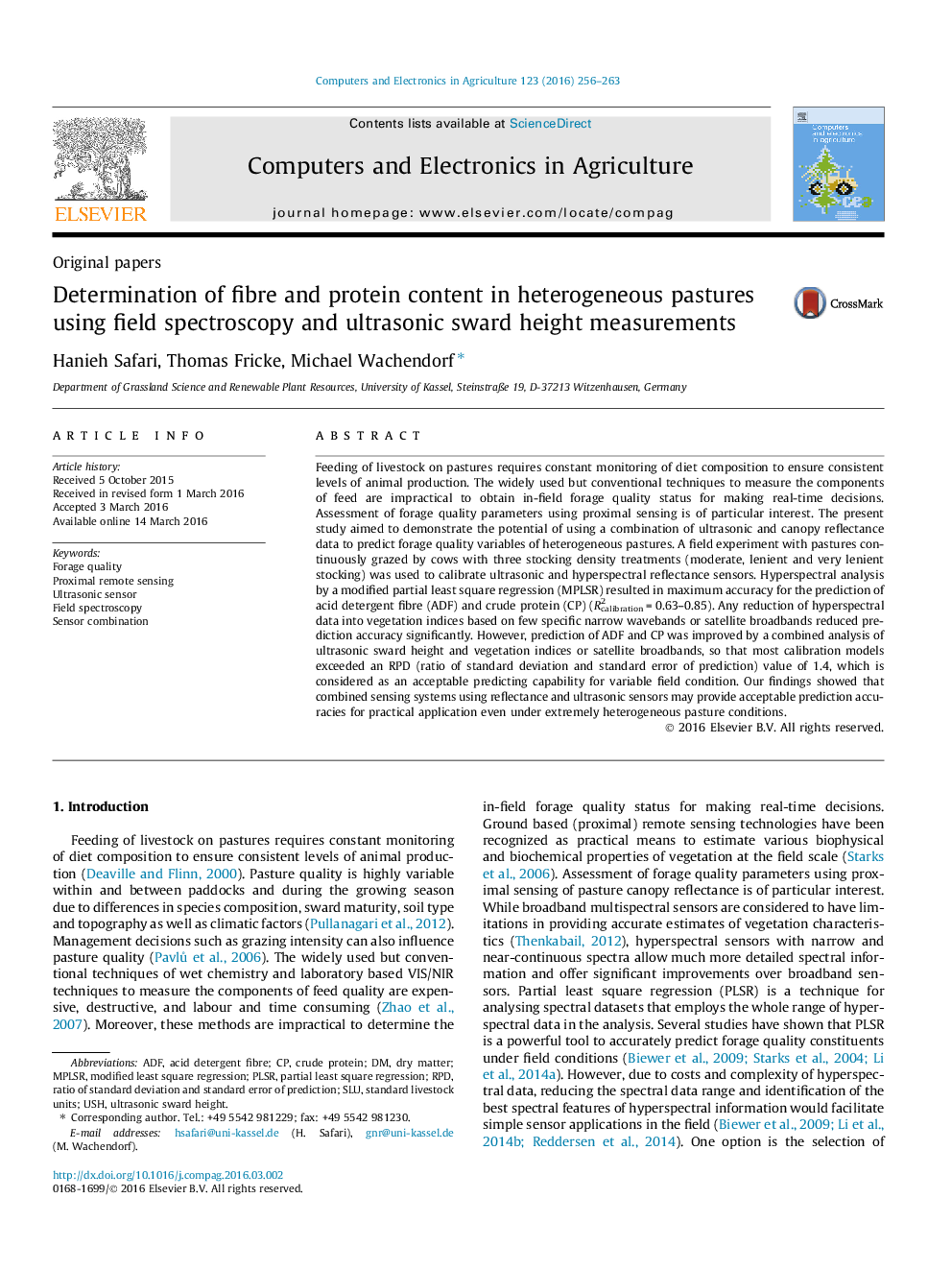| کد مقاله | کد نشریه | سال انتشار | مقاله انگلیسی | نسخه تمام متن |
|---|---|---|---|---|
| 83961 | 158856 | 2016 | 8 صفحه PDF | دانلود رایگان |
• Hyperspectral analysis by MPLS resulted in maximum accuracy.
• Exclusive ultrasonic sensor resulted in very poor prediction accuracies.
• Vegetation indices or satellite broadbands achieved lower prediction accuracies.
• Combining ultrasonic and spectral data improved the prediction of forage quality.
Feeding of livestock on pastures requires constant monitoring of diet composition to ensure consistent levels of animal production. The widely used but conventional techniques to measure the components of feed are impractical to obtain in-field forage quality status for making real-time decisions. Assessment of forage quality parameters using proximal sensing is of particular interest. The present study aimed to demonstrate the potential of using a combination of ultrasonic and canopy reflectance data to predict forage quality variables of heterogeneous pastures. A field experiment with pastures continuously grazed by cows with three stocking density treatments (moderate, lenient and very lenient stocking) was used to calibrate ultrasonic and hyperspectral reflectance sensors. Hyperspectral analysis by a modified partial least square regression (MPLSR) resulted in maximum accuracy for the prediction of acid detergent fibre (ADF) and crude protein (CP) (R2calibration = 0.63–0.85). Any reduction of hyperspectral data into vegetation indices based on few specific narrow wavebands or satellite broadbands reduced prediction accuracy significantly. However, prediction of ADF and CP was improved by a combined analysis of ultrasonic sward height and vegetation indices or satellite broadbands, so that most calibration models exceeded an RPD (ratio of standard deviation and standard error of prediction) value of 1.4, which is considered as an acceptable predicting capability for variable field condition. Our findings showed that combined sensing systems using reflectance and ultrasonic sensors may provide acceptable prediction accuracies for practical application even under extremely heterogeneous pasture conditions.
Journal: Computers and Electronics in Agriculture - Volume 123, April 2016, Pages 256–263
